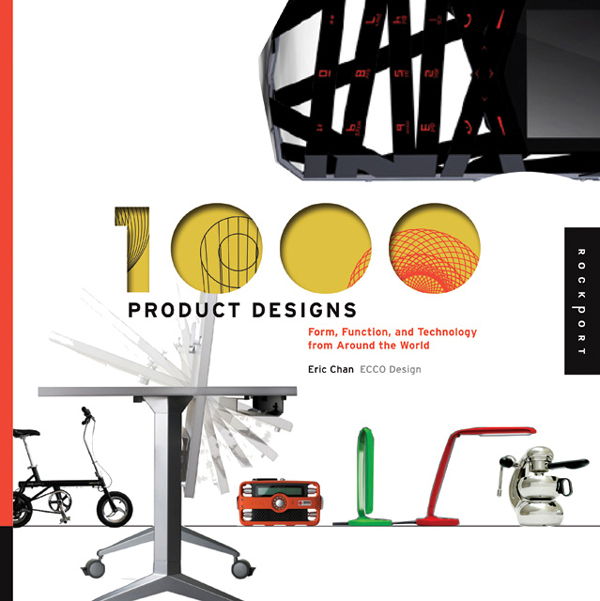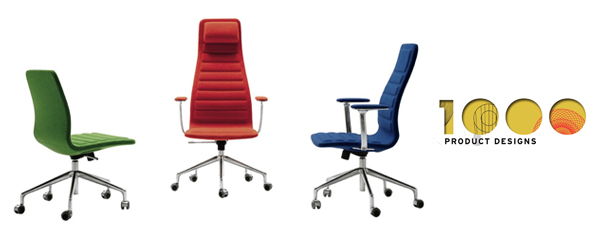1000 Product Designs by Eric Chan

Article by Martin Gibson – @embody3d @martingibson – 13.11.2010
1000 Product Designs – Form, Function, and Technology from Around the World by Eric Chan, Published by Rockport is a book showcasing the coolest and sexiest products designed in the last couple of years. All designs featured throughout are ultra-modern and the book covers every product design category imaginable making it a fantastic inspiration piece.
There is so much diversity that I can only give praise to Eric Chan for collating such a purposeful collection of different aesthetical trends which is bound to inspire a new generation of designers. The book is excellently and simply structured into a variety of industrial design categories including: sit, illuminate, live, eat, care, organize, work, express, entertain and connect. The selection of these category names is just ingenious as it is broad enough to cover its contents, yet it doesn’t make the reader have to question why a certain product is in a certain place, e.g. “why is there a clock in homewares…clocks aren’t homewares surely”. Nearly every page is split up into horizontal thirds which show a well sized image with a brief caption. However there is no date or description which is most unfortunate as many pieces you will question the justification of some design decisions!
Most of the designs are from the USA with dribs and drabs from Europe and Asia. Either this is a reflection on the residence of Eric Chan, the author, or perhaps it is a belief that most modern design is coming from America? You be the judge. But I think this book asserts that there is a modern international version of design that transcends cultures and societies. I think this is a shame as I think there is more to design than this quirky ill-guided ‘modern design’ as I am sure in the middle east they would lack empathy for many of these pieces. The author states that this book showcases where form, function and technology meet, but there are many instances where function takes a back seat to form. Many students and studios are going to buy this book and say “wow these designs are incredible”. But for too many students this book is going to give an unrealistic impression of what modern design is all about. It will escape them into a dreamland where real clients don’t exist and where project and product budgets could potentially send an astronaut into space.
Some of these designs featured in the book are one-off pieces (or even just renders for that matter). But design isn’t about museums it’s about mass production and products for the people; this is of course the distinction between art and design. The products that are mass-produced in the book are obvious, they tend to be more conservative in design and are visually more accessible to the mass market. They tend to be more lean with materials and manufacturing and more clever when it comes to sustainability initiatives. For example there are some chairs in this book that look like the are constructed from half a tonne of MDF and would cost $2000-5000 RRP. There are chairs featured that have the durability of a year or two before they would wear or simply collapse, and then there are chairs that just look plane uncomfortable; is this good design?…Absolutely not. But this criticism is only reserved to a small minority of pieces in 1000 Product Designs the far majority are a fantastic reflection of modern design.
This book is perfect for students who want to grasp a modern aesthetic, or a consultancy aiming for a competitive edge. You could probably google image search a lot of these products, but they will never be as precisely documented nor as well categorised as this book. So save yourself some time, rest those computer drained eyes and buy this book!


